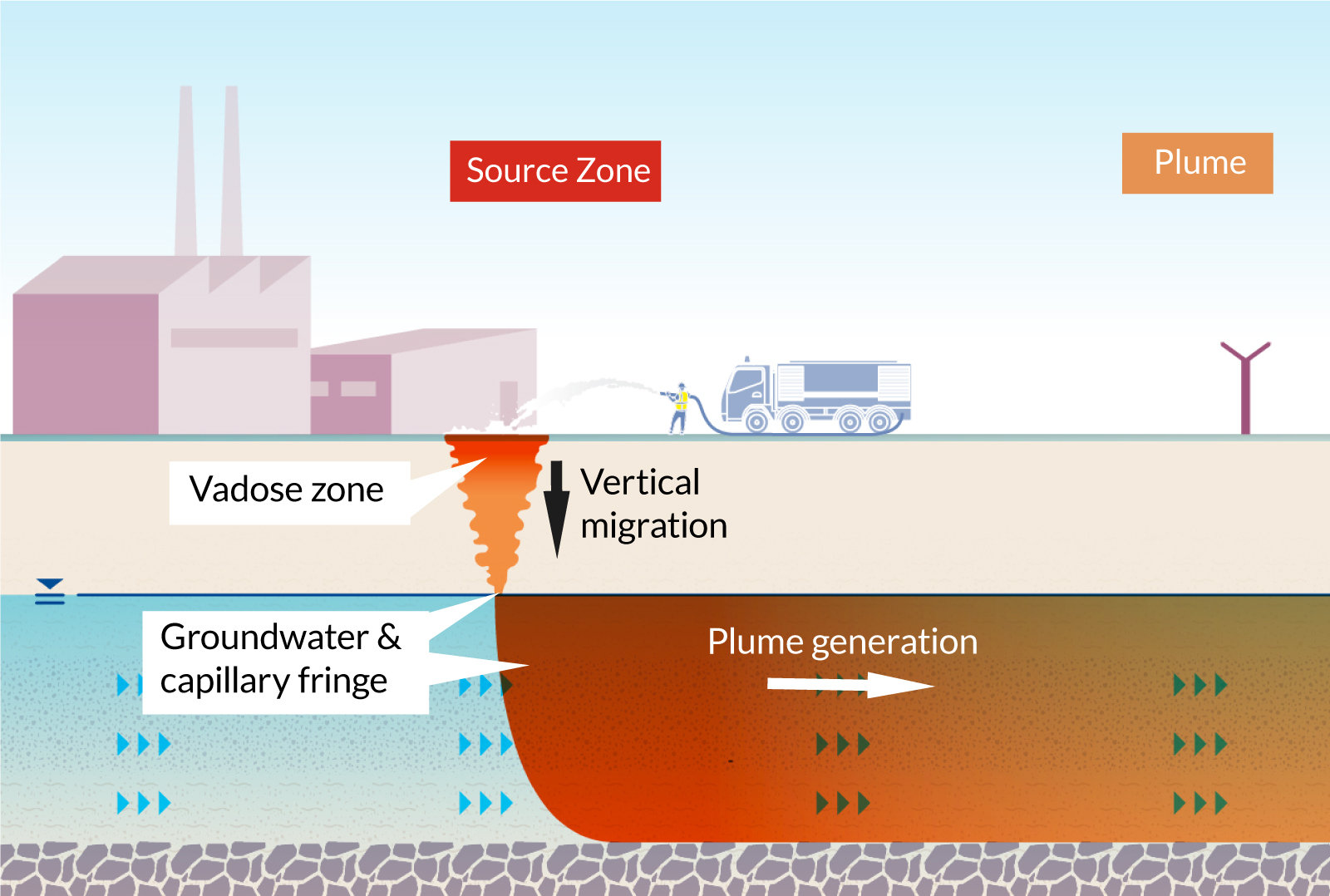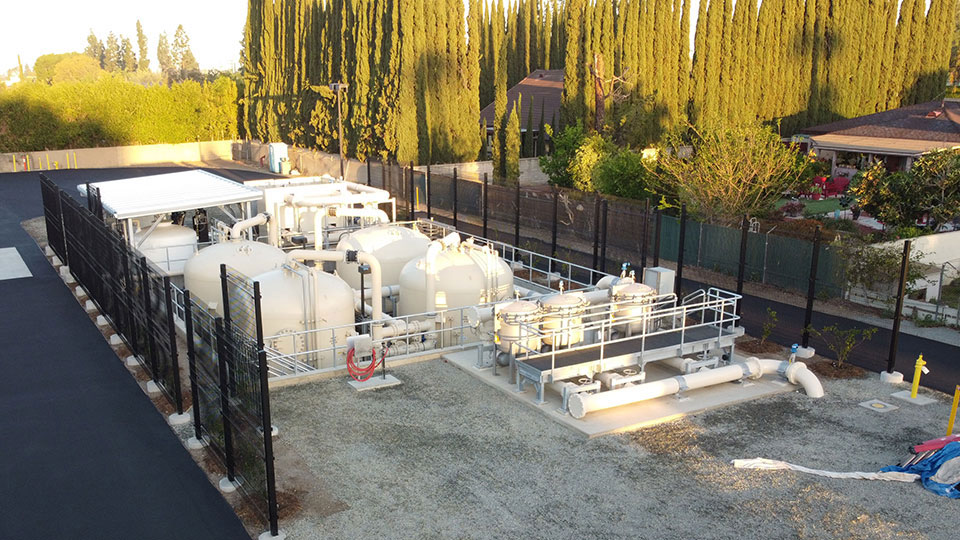Comprehensive PFAS Management Strategies for Water Sources
Your Guide to PFAS Therapy Technologies and Conveniences
The occurrence of PFAS contamination in water sources demands a thorough understanding of readily available therapy technologies. Various techniques, such as triggered carbon filtering, ion exchange systems, and advanced oxidation procedures, existing distinct benefits in resolving these relentless toxins. Each technology not just targets particular PFAS compounds however likewise plays a critical role in improving total water high quality and protecting ecological integrity. As communities face the ramifications of PFAS exposure, the selection of an appropriate treatment method ends up being increasingly important, motivating a more detailed assessment of these innovations and their particular advantages.
Comprehending PFAS Contamination
Recognizing PFAS contamination is crucial for addressing its prevalent influence on ecological and human wellness (m270 pfas treatment). Per- and polyfluoroalkyl substances (PFAS) are a team of synthetic chemicals extensively used in different industrial and consumer products as a result of their water- and grease-resistant properties. Commonly discovered in firefighting foams, non-stick pots and pans, and water-repellent materials, PFAS have actually gone into the atmosphere through manufacturing processes, wastewater discharges, and leaching from landfills
As soon as launched, these materials continue the atmosphere, bring about extensive contamination of dirt and water resources. Their unique chemical framework, identified by solid carbon-fluorine bonds, makes them immune to deterioration, causing a phenomenon referred to as "for life chemicals." PFAS can collect in the human body and the food chain, potentially creating adverse health impacts, consisting of immune system disturbance, developing issues, and a boosted risk of specific cancers.
Regulative firms and health companies are significantly recognizing the relevance of PFAS contamination, prompting initiatives to keep track of, examine, and mitigate its results. Comprehending the pathways of PFAS contamination is vital for educating public law and creating effective methods to secure both ecological and human wellness.
Introduction of Therapy Technologies
Different treatment technologies have been established to deal with the challenges presented by PFAS contamination in water and soil. These technologies can be broadly classified into numerous classifications, each with its one-of-a-kind devices and effectiveness in eliminating PFAS substances.
One prominent method is ion exchange, which uses material materials to capture and remove PFAS from polluted water. One more innovation, advanced oxidation processes (AOPs), utilizes strong oxidants and ultraviolet light to break down PFAS into much less damaging materials.

Turned On Carbon Filtration
Triggered carbon purification is a widely made use of method for the removal of PFAS from infected water, recognized for its ability to adsorb a broad variety of natural substances. This modern technology uses triggered carbon, a very permeable product with a comprehensive surface location, which promotes the binding of PFAS molecules via physical adsorption. The efficiency of turned on carbon in eliminating PFAS is affected by several elements, consisting of the type of carbon used, the get in touch with time, and the concentration of PFAS in the water.
One of the benefits of turned on carbon purification is its versatility; it can be carried out in different setups, such as granular activated carbon (GAC) systems or powdered triggered carbon (POLITICAL ACTION COMMITTEE) systems. GAC systems are usually employed in larger-scale applications, while PAC can be utilized in smaller or short-term arrangements. Moreover, the innovation is reasonably simple to operate and preserve, making it accessible for numerous water therapy centers.

Ion Exchange Solution
Ion exchange systems stand for one more reliable strategy for the elimination of PFAS from infected water, matching techniques like turned on carbon purification. These systems operate the concept of exchanging ions in the water with ions held on a resin material. Ion exchange materials can be particularly created to target the negatively billed PFAS substances, efficiently capturing them and allowing cleaner water to go through.
Among the main advantages of ion exchange systems is their capacity to eliminate a wide variety of PFAS, consisting of both long-chain and short-chain variants. This convenience makes them suitable for numerous applications, ranging from community water therapy to commercial procedures. Additionally, ion exchange systems can often achieve lower discovery limits for PFAS compared to some other treatment techniques, thus enhancing water high quality.
Nevertheless, it is necessary to monitor and handle the regeneration of ion exchange media, as the performance can decrease with time as a result of saturation. Correct maintenance and substitute of the resin are essential for sustaining the system's effectiveness. Overall, ion exchange systems give a dependable and reliable solution for PFAS elimination, contributing considerably to safe alcohol consumption water standards and ecological defense.
Advanced Oxidation Processes
Advanced Oxidation Processes (AOPs) use effective oxidants to efficiently weaken PFAS compounds in infected water. These ingenious treatment techniques generate very reactive varieties, such as hydroxyl radicals, that can break down complicated PFAS molecules right into much less unsafe by-products. m270 pfas treatment. AOPs commonly employ mixes of ultraviolet (UV) light, ozone, hydrogen peroxide, or Fenton's reagent, improving the oxidation possibility and enhancing deterioration effectiveness
The key advantage of AOPs exists in their capability to target a wide range of PFAS substances, including both long-chain and short-chain versions. This flexibility is crucial, as PFAS contamination often involves mixes of various compounds with varying chemical frameworks. Furthermore, AOPs can be incorporated into existing water treatment systems, making them a sensible option for several towns and sectors.
However, the implementation of AOPs can be resource-intensive, calling for mindful factor to consider of operational costs and energy consumption. In addition, while AOPs work in damaging down PFAS, they might not entirely get rid of all byproducts, necessitating more therapy actions - m270 pfas treatment. Overall, AOPs represent a promising avenue for attending you can check here to PFAS contamination, adding to cleaner water resources and boosted public health defense

Conclusion
In verdict, dealing with PFAS contamination requires a detailed understanding of available treatment technologies. Turned on carbon purification, ion exchange systems, and progressed oxidation processes each existing distinct benefits for efficiently eliminating these harmful compounds from water sources. By picking the proper technology, areas can enhance water high quality, protect public wellness, and alleviate the environmental risks linked with PFAS exposure. Proceeded study and application of these methods are important for effective management of PFAS contamination in influenced locations.